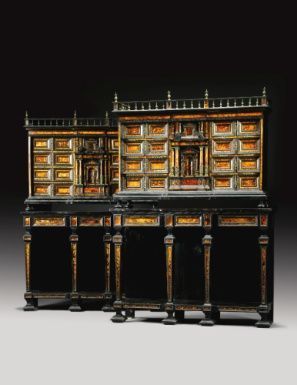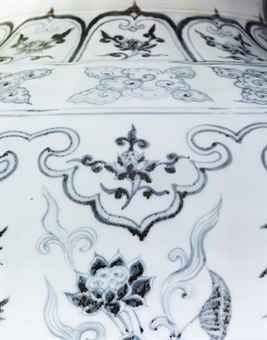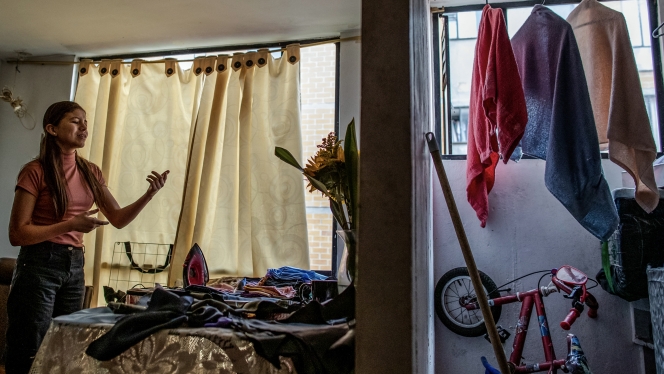Pablo Picasso, La Famille, 1956. Est. €2,800,000-3,500,000 / $3,570,000-4,460,000. Photo: Sotheby’s/ArtDigital Studio.
PARIS.- Sotheby’s announced a highly selective sale of Impressionist & Modern Art to be held in Paris on 5th December 2012. This prestigious auction will pay tribute to two great 20th-Century Masters: Picasso and Matisse. Wifredo Lam will also be honoured with a monumental and emblematic masterpiece, from the Joyce & Samir Mansour Collection. The sale also features Surrealism and top-quality works from the 1920s-1940s by Matta, Masson, Duchamp, Magritte, Man Ray, Tanguy and Picabia.
Two Star Works from Picasso’s Post-War Years
Sotheby’s is will present for auction two magnificent examples of the power and virtuosity of Picasso’s late work.
Femme et Jeune Garçon Nus (1969) is one of his most grandiose drawings from this period. Picasso’s supreme skill and the complex use of different techniques yielded a dazzlingly powerful image, reflecting the glorious finale to his career. Femme et Jeune Garçons Nus, shown at the legendary Picasso exhibition at the Palais des Papes in Avignon in 1970, is the work of young man of 88 at the height of his powers and at the pinnacle of the art of his era. The perfection Picasso attained would define the classicism of his final period (est. €2,000,000-3,000,000 / $2,550,000-3,825,000).*
Pablo Picasso painted La Famille at the age of 72 at La Californie, the villa in Cannes where he had moved with his new partner Jacqueline the summer before, opening a new chapter in his life and work. The family constitutes one of Picasso’s most personal themes, reflecting his ceaseless exploration of the meaning of art. The Family is one of six paintings he made on 20th August 1956, five of which show a seated man playing the flute for small dancing figures. La Famile is the most accomplished and carefully painted work in this series. Picasso scratched some parts of the paint surface to create blank lines, accentuating the outlines of certain forms and adding detail to the trees. It was also the most personal painting of the six: the figures can be identified as Picasso, Jacqueline, Claude, Paloma and Cathy (est. €2,800,000-3,500,000 / $3,570,000-4,460,000).
A Legendary Work by Wifredo Lam: Peinture, Nous t'Attendons (1958-61)
Peinture, Nous t'Attendons (1958-61), one of the culminating masterpieces of post-war Surrealism, was acquired directly from Lam by Joyce and Samir Mansour, and counts as one of the most ambitious and grandiose works in the Cuban artist’s career. This monumental composition, painted during a turbulent period in Lam’s life, was chosen by Breton for a full-page colour reproduction in the new 1965 edition of Surréalisme et la Peinture – the last edition to appear during its author’s lifetime.
This legendary work has not been seen in public since 1969, and offers a remarkable glimpse of Wifredo Lam’s mysterious world with its horse-headed women. It is a perfect illustration of the power of his work to stimulate the spirit and move the soul (est. €2,000,000-3,000,000 / $2,550,000-3,825,000).
Surrealism in the Spotlight
Morphologie Psychologique de l’Attente (1938) is one of the first works on canvas painted by Matta just a few months after he discovered painting. It sows the seed for the plastic innovations which, a few years later in the United States, would lead him to influence a whole generation of artists, including Robert Motherwell and Jackson Pollock. This poetic work is one of the ‘visionary paintings’ vaunted by its first owner Gordon Onslow-Ford (est. €800,000-1,200,000 / $1,020,000-1,530,000).
Réunion d’Insectes, with its swarm of giant insects, dates from André Masson’s stay in Spain between 1934-36 (est. €500,000-700,000 / $637,000-892,000). Its eye-catching colours fail to hide an underlying menace.
Max Ernst is represented by two works from the 1960s: La Terre à travers les âges from 1961 (est. €180,000-250,000 / $229,000-319,000) and Sternbild II from 1967 (est. €200,000-300,000 / $255,000-382,000).
Yves Tanguy’s mineral landscape Le Plan des Sources (1929) was inspired by memories of his childhood in Brittany and youthful stint in the Merchant Navy (est. €300,000-500,000 / $382,000-637,000).
Femme Accroupie (1942) combines all the elements typical of Francis Picabia’s work during World War II. This crouching nude seems both modest yet intensely sensual. The painting is inspired by photographs from 1930s girlie magazines which Picabia liked to copy, modify, retouch, complete and transform, so as to accentuate or divert their meaning (est. €300,000-400,000 / $382,000-510,000).
The section also includes a Marcel Duchamp ready-made, Apolinère Enameled (1916/17) – a humorous homage to the famous poet, and the last of the edition still in private hands (est. €350,000-500,000 / $446,000-637,000); one of the earliest major works by René Magritte, Métaphore (1923), reflecting the influence of De Chirico (est. €300,000-400,000 / $382,000-510,000); and a superb ink drawing by Man Ray, La Mort Inutile II (1937), portraying Lee Miller (est. €120,000-180,000 / $153,000-230,000).
Henri Matisse: Themes & Variations
Three remarkable drawings from Henri Matisse’s 1941 Themes & Variations, with their expressive and innovative outlines, are the fruit of a method which the artist called ‘libre jaillissement.’ Matisse was aiming to show that the apparent facility of his drawings was misleading – and that a long interior process was needed before he could produce his ‘instantaneous improvisations.’ This remarkable ensemble of three successive variations from a single series – preserved as a triptych and never separated – was given by Matisse to Suzanne Schiff-Wertheimer, the chef de service of the Ophthalmology Ward at the Quinze-Vingts Hospital in Paris who looked after him for many years (est. €700,000-1,000,000 / $892,000-1,275,000).
* estimates do not include buyer’s premium
Pablo Picasso: Femme et Jeune Garçon Nus, 1969. Estimate €2,000,000-3,000,000 / $2,550,000-3,825,000. Photo: Sotheby’s/ArtDigital Studio.








































